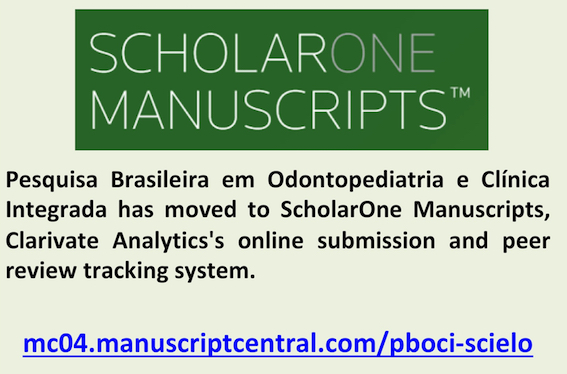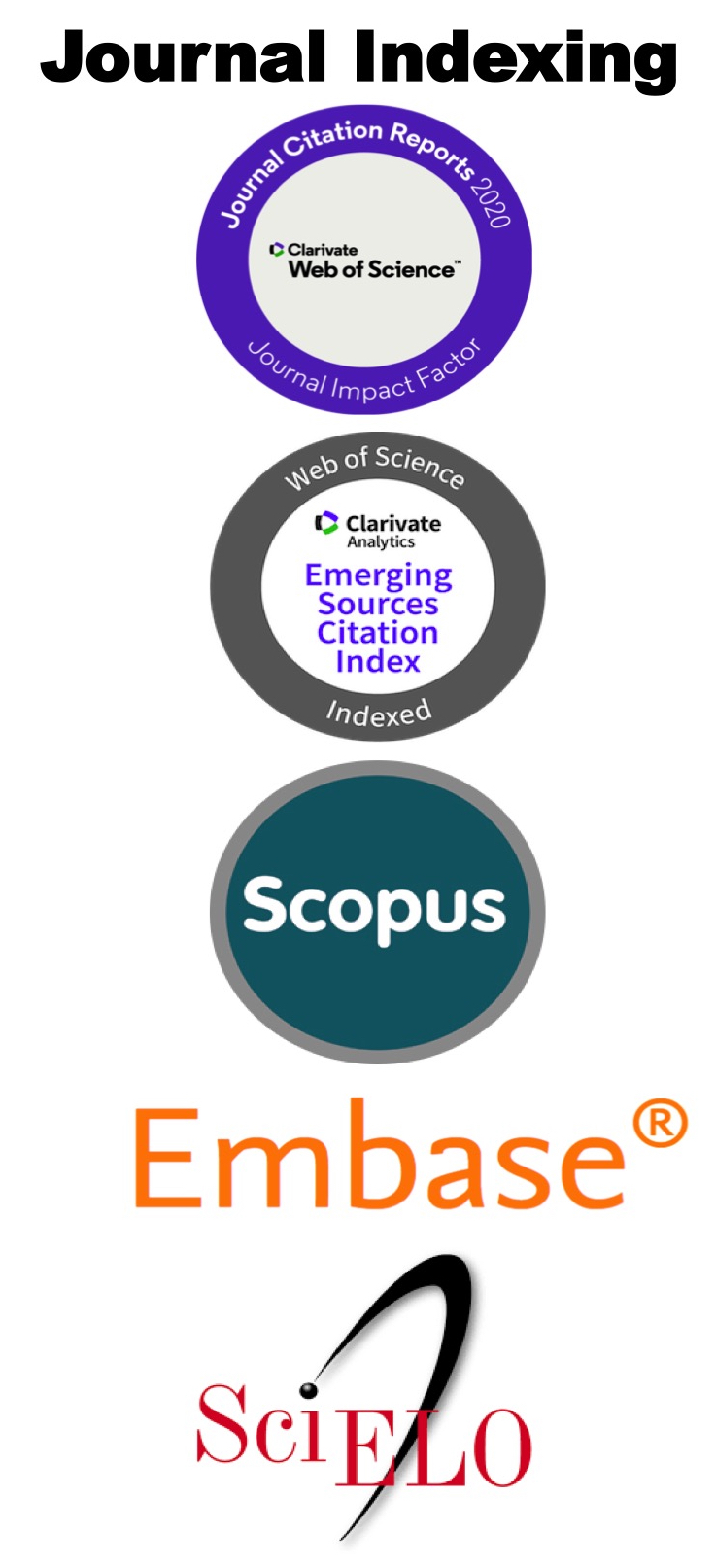Root Canal Morphological Variations of Mandibular Third Molars Using Cone Beam Computed Tomography
Keywords:
Tomography, X-Ray Computed, Endodontics, Molar, ThirdAbstract
Objective: To evaluate the variations in the root canal morphology of mandibular third molars (M3M) using cone beam computed tomography (CBCT). Material and Methods: A total of 186 CBCT images were analyzed to assess the root and root canal morphology of M3M using Vertucci classification. Gender influence on morphology was also examined. Statistical analysis was performed using Chi-square or Fisher's exact test. Results: Most M3M exhibited two roots, followed by a single root and three roots, with no significant difference in number of roots between sexes on either side (p=0.512 and p=0.598). Three canals were most common in both sexes, but four canals were significantly more common in males on the right side. No significant sex difference was observed for the left side (p=0.245). Distal roots predominantly showed Type I canal configuration on both sides, while mesial roots exhibited Type IV on the right and Type I on the left. Conclusion: Mandibular third molars in the South Indian population had two roots and three canals, with four canals more common in males on the right. Distal root mostly exhibited Type I canal configuration, whereas mesial root varied, highlighting the importance of understanding the complexity for endodontic treatment planning.References
John I, Bakland LK, Baumgartner JC. Ingle’s Endodontics. Lewiston, NY: BC Decker; 2008. 1555p.
De Pablo ÓV, Estevez R, Péix Sánchez M, Heilborn C, Cohenca N. Root anatomy and canal configuration of the permanent mandibular first molar: A systematic review. J Endod 2010; 36(12):1919-1931. https://doi.org/10.1016/j.joen.2010.08.055
Khawaja N, Kumar Punjabi S, Banglani MA. Root canal morphology: Concept in mandibular 3rd molar by conventionally endodontic treatment. Prof Med J 2017; 24(4):617-621. https://doi.org/10.29309/TPMJ/2017.24.04.1451
Peikoff MD, Christie WH, Fogel HM. The maxillary second molar: Variations in the number of roots and canals. Int Endod J 1996; 29(6):365-369. https://doi.org/10.1111/j.1365-2591.1996.tb01399.x
Sidow SJ, West LA, Liewehr FR, Loushine RJ. Root canal morphology of human maxillary and mandibular third molars. J Endod 2000; 26(11):675-678. https://doi.org/10.1097/00004770-200011000-00011
Cosić J, Galić N, Vodanović M, Njemirovskij V, Segović S, Pavelić B, et al. An in vitro morphological investigation of the endodontic spaces of third molars. Coll Antropol 2013; 37(2):437-442.
Neelakantan P, Subbarao C, Subbarao CV. Comparative evaluation of modified canal staining and clearing technique, cone-beam computed tomography, peripheral quantitative computed tomography, spiral computed tomography, and plain and contrast medium-enhanced digital radiography in studying root canal morphology. J Endod 2010; 36(9):1547-1551. https://doi.org/10.1016/J.JOEN.2010.05.008
Zhang W, Tang Y, Liu C, Shen Y, Feng X, Gu Y. Root and root canal variations of the human maxillary and mandibular third molars in a Chinese population: A micro-computed tomographic study. Arch Oral Biol 2018; 95:134-140. https://doi.org/10.1016/J.ARCHORALBIO.2018.07.020
Demirbuga S, Sekerci AE, Dinçer AN, Cayabatmaz M, Zorba YO. Use of cone-beam computed tomography to evaluate root and canal morphology of mandibular first and second molars in Turkish individuals. Med Oral Patol Oral Cir Bucal 2013; 18(4):e737-44. https://doi.org/10.4317/MEDORAL.18473
Dinakar C, Shetty UA, Salian VV, Shetty P. Root canal morphology of maxillary first premolars using the clearing technique in a South Indian population: An in vitro study. Int J Appl Basic Med Res 2018; 8(3):143-147. https://doi.org/10.4103/IJABMR.IJABMR_46_18
Arai Y, Tammisalo E, Iwai K, Hashimoto K, Shinoda K. Development of a compact computed tomographic apparatus for dental use. Dentomaxillofac Radiol 1999; 28(4):245-248. https://doi.org/10.1038/SJ/DMFR/4600448.
Mozzo P, Procacci C, Tacconi A, Tinazzi Martini P, Bergamo Andreis IA. A new volumetric CT machine for dental imaging based on the cone-beam technique: Preliminary results. Eur Radiol 1998; 8(9):1558-1564. https://doi.org/10.1007/S003300050586
Scarfe WC, Levin MD, Gane D, Farman AG. Use of cone beam computed tomography in Endodontics. Int J Dent 2010; 2009:634567. https://doi.org/10.1155/2009/634567
Patel S, Dawood A, Pitt Ford T, Whaites E. The potential applications of cone beam computed tomography in the management of endodontic problems. Int Endod J 2007; 40(10):818-830. https://doi.org/10.1111/J.1365-2591.2007.01299.X
Tomar D, Dhingra A, Tomer A, Sharma S, Sharma V, Miglani A. Endodontic management of mandibular third molar with three mesial roots using spiral computed tomography scan as a diagnostic aid: a case report. Oral Surg Oral Med Oral Pathol Oral Radiol 2013; 115(5):e6-10. https://doi.org/10.1016/J.OOOO.2011.10.032
Bhopatkar J, Ikhar A, Nikhade P, Chandak M, Agrawal P. Navigating challenges in the management of mandibular third molars with radix paramolaris: A case report. Cureus 2023; 15(9):e45744. https://doi.org/10.7759/CUREUS.45744
Kim SY, Kim BS, Woo J, Kim Y. Morphology of mandibular first molars analyzed by cone-beam computed tomography in a Korean population: variations in the number of roots and canals. J Endod 2013; 39(12):1516-1521. https://doi.org/10.1016/J.JOEN.2013.08.015
Faramarzi F, Shahriari S, Shokri A, Vossoghi M, Yaghoobi G. Radiographic evaluation of root and canal morphologies of third molar teeth in Iranian population. Avicenna J Dent Res 2013; 5:30-32. https://doi.org/10.17795/AJDR-21102.
Park JB, Kim NR, Park S, Ko Y. Evaluation of number of roots and root anatomy of permanent mandibular third molars in a Korean population, using cone-beam computed tomography. Eur J Dent 2013; 7:296. https://doi.org/10.4103/1305-7456.115413
Ahmad I, Azzeh M, Zwiri A, Abu Haija MA, Diab M. Root and root canal morphology of third molars in a Jordanian subpopulation. Saudi Endod J 2016; 6:113-121. https://doi.org/10.4103/1658-5984.189350
Somasundaram P, Rawtiya M, Wadhwani S, Uthappa R, Shivagange V, Khan S. Retrospective study of root canal configurations of mandibular third molars using CBCT - Part-II. J Clin Diagn Res 2017; 11:ZC55-9. https://doi.org/10.7860/JCDR/2017/20153.10072
Priyank H, Viswanath B, Sriwastwa A, Hegde P, Abdul NS, Golgeri MS, et al. Radiographical evaluation of morphological alterations of mandibular third molars: A Cone Beam Computed Tomography (CBCT) study. Cureus 2023; 15(1):e34114. https://doi.org/10.7759/CUREUS.34114
Madani ZS, Mehraban N, Moudi E, Bijani A. Root and canal morphology of mandibular molars in a selected Iranian population using cone-beam computed tomography. Iran Endod J 2017; 12(2):143-148. https://doi.org/10.22037/IEJ.2017.29
Downloads
Published
How to Cite
Issue
Section
License
Copyright (c) 2024 Pesquisa Brasileira em Odontopediatria e Clínica Integrada

This work is licensed under a Creative Commons Attribution-NonCommercial 4.0 International License.



